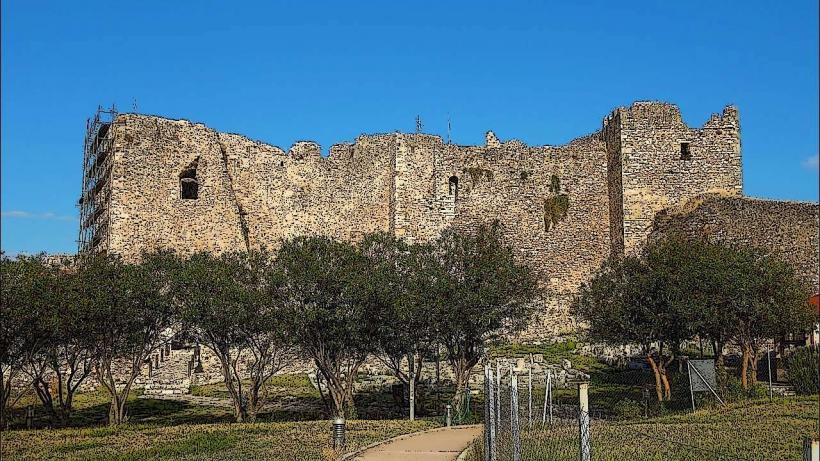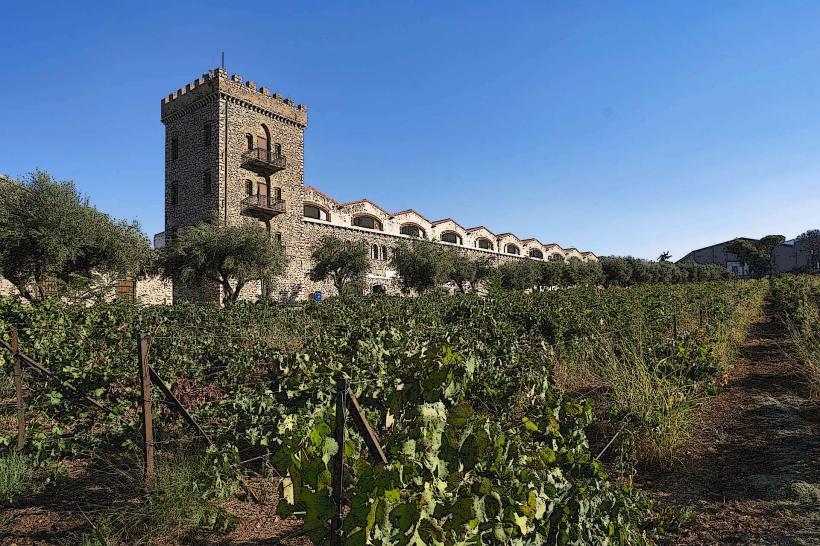Information
Landmark: Patras Rio Antirrio BridgeCity: Patras
Country: Greece
Continent: Europe
The Rio–Antirrio Bridge, also known as the Charilaos Trikoupis Bridge, is a significant and impressive engineering marvel located in western Greece, connecting the Peloponnese Peninsula (near Patras) to mainland Greece, near the town of Antirrio. It spans the Gulf of Corinth, one of the busiest waterways in Greece, and is a crucial part of the country's transportation infrastructure.
Overview of the Rio-Antirrio Bridge:
Location: The bridge connects the town of Rio, which lies just to the west of Patras, to Antirrio on the mainland, effectively linking the Peloponnese with central Greece.
Opening: The Rio-Antirrio Bridge was officially opened to traffic in 2004, in time for the Athens Olympic Games, and remains one of the largest cable-stayed bridges in the world.
Length and Dimensions: The bridge stretches approximately 2.88 kilometers (1.79 miles) across the Gulf of Corinth, making it the longest cable-stayed bridge in Europe. The central span of the bridge is 560 meters long, allowing large ships to pass beneath it. Its total width is about 28 meters, including lanes for both vehicles and pedestrians.
Design: The bridge is a cable-stayed design, where the deck is supported by cables that are anchored to several large pylons. The pylons rise to a height of 158 meters, making them among the tallest in Europe. The design of the bridge was created by the engineering consortium "Greece's largest ever infrastructure project" and features an aesthetically pleasing modern structure that has become an iconic landmark in the region.
Functionality: The Rio-Antirrio Bridge serves as a vital transportation link for the Peloponnese Peninsula to the rest of mainland Greece. It carries cars, trucks, and buses, and significantly reduces travel time for people and goods crossing the Gulf of Corinth. Before the bridge’s construction, people had to rely on ferries or longer inland routes.
Engineering Significance:
Innovative Construction: The construction of the Rio-Antirrio Bridge was a groundbreaking feat, requiring advanced engineering techniques. It is designed to withstand extreme forces, including earthquakes, high winds, and strong currents. The seismic activity in the region, combined with the challenging topography of the Gulf of Corinth, made the project particularly complex.
Foundation: The foundations of the bridge were built on the seafloor using floating platforms, and each pylon is supported by four large foundations that extend down to the seabed, making it one of the most stable structures in the region.
Safety Features: The bridge was designed with safety in mind, featuring advanced seismic and wind resistance systems to ensure its stability during natural events like earthquakes or heavy storms.
Tourism and Cultural Significance:
Iconic Landmark: The Rio-Antirrio Bridge has become an iconic landmark in western Greece. Its elegant, modern design contrasts with the natural beauty of the surrounding region, and it has become a symbol of modern Greece's advancement in engineering and infrastructure.
Views: Visitors to the bridge can enjoy breathtaking views of the Gulf of Corinth, Patras, and the surrounding mountains. It’s a popular spot for photographers who capture the stunning backdrop of the bridge with the water and mountains.
Tourist Access: While the bridge is a functional transportation route, it is also an attraction in its own right. There are several viewing points along the coastline, where visitors can enjoy a panoramic view of the bridge and the surrounding landscape.
Economic and Strategic Importance:
Economic Impact: The bridge has had a significant positive impact on the economy of the region, facilitating easier and quicker transport of goods and people. It has improved the connectivity between the Peloponnese and mainland Greece, benefiting trade and tourism in the region.
Strategic Location: Given its position, the bridge serves as an important link between Patras and the rest of the Greek mainland, including the port city of Patras, which is a major transit point for ferries traveling to Italy.
Conclusion:
The Rio–Antirrio Bridge is one of Greece’s most impressive modern engineering feats. It not only serves as a critical piece of transportation infrastructure, linking the Peloponnese with mainland Greece, but it has also become an iconic landmark in the region. With its unique design, advanced technology, and economic significance, the bridge has greatly contributed to the development of western Greece and remains a symbol of the country’s commitment to modernizing its infrastructure. For visitors, it offers spectacular views and serves as a reminder of the region's blend of ancient history and modern achievement.





